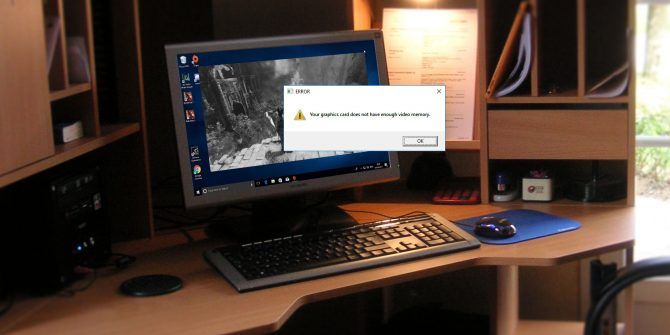
How to Stop Windows 10 From Automatically Connecting to a Wi-Fi Network
10 julio, 2021
7 Ways to Fix Print Screen Not Working
11 julio, 2021Cómo arreglar un bucle "atascado en reparación automática" en Windows 10

Here’s what to do when the tool that’s meant to repair issues ends up creating issues on a PC.
If you ever encountered an error and don’t know what to do, Windows 10 comes equipped with troubleshooting tools to fix it for you. One of those convenient tools is the automatic repair tool. It is a handy repair feature that can troubleshoot issues that stop you from booting correctly.
But, what do you do when the tool itself is the cause of the error? If your PC is stuck in an automatic repair loop, we have devised a list of solutions to fix your error.
What Is an Automatic Repair Loop and What Causes It?
An automatic repair loop is an error that occurs when Windows 10 tries to boot and fails, then forcefully boots up the automatic repair tool and tries to repair itself. When Windows can’t repair itself, it reboots and repeats itself in an endless cycle.
There isn’t a single cause for a Windows 10 automatic repair loop and they can be hard to figure out. The most common cause tends to be missing or corrupted system files, in which Windows can’t boot or repair itself because these essential files it needs to run aren’t available.
Missing device drivers also tend to be one of the biggest causes for the error. If you have recently upgraded your PC, your new components will need device drivers to allow Windows to use them. If the drivers are missing, out-of-date, or not supported, they could cause a repair loop. New peripherals can also cause this error if their drivers aren’t installed correctly.
Other possible causes tend to be related to faulty components, malware infections, corrupted system registries, and even broken installation files. But, there is no need to worry as our solutions will work for most causes of a Windows 10 automatic repair loop.
1. Run Fixboot and Chkdsk Commands
If you can’t identify any cause of a Windows 10 automatic repair loop, you can use some system repair tools to try to fix it. The chkdsk command starts a low-level check of your system drive for errors using the Check Disk utility. If it detects errors, it will automatically repair them.
While Windows can’t boot, you can still force Windows to boot to a Command Prompt window using the Advanced options menu screen.
To do this:
- Restart your PC and press the F8 key on your keyboard before the Windows logo and spinning icon appear. This will cause the Windows boot troubleshooting menu to appear. Select See advanced repair options to begin.
-
From the Choose an option screen, select Troubleshoot > Advanced options > Command Prompt.
-
In the Command Prompt window, type the following command and press Enter:
chkdsk c: /r -
If the chkdsk command fails, you can also try using the Fixboot command. In the same Command Prompt window, enter the following command and press Enter:
fixboot c: - Once you are finished, close the Command Prompt window and restart your PC.
2. Perform a System Scan in Safe Mode
If system repair tools find corrupted files, Windows replaces those files with the local image. However, if this image itself has become corrupted, Windows can’t repair itself and causes the previous commands to fail. To repair this, we can use the DISM (Deployment Image Servicing and Management) tool.
To use this tool, we first must enable Safe Mode. This loads a basic version of Windows without any third-party programs to help you fix your start-up errors.
- The first step, like before, is to restart your PC and press the F8 key while booting to open the Windows boot troubleshooting menu.
- Select See advanced repair options > Troubleshoot > Advanced options > Startup Settings > Restart.
- Now, you will see a list of various restart options. Choose Enable Safe Mode with Networking by selecting F5 on your keyboard.
- Once Windows boots up in Safe Mode, right-click the Start menu and select Windows PowerShell (Admin).
-
In the PowerShell window, type the following command and press Enter:
DISM /Online /Cleanup-Image /RestoreHealth - This will take some time to finish. When the DISM tool finishes running, reboot your PC and follow the above steps to open the PowerShell window in Safe Mode again.
-
This time, type the following command and press Enter:
sfc /scannow - This will check the integrity of Windows system files and allow us to verify if Windows is fully repaired.
3. Restore the Windows Registry
Sometimes, malware infections or disk issues can also end up corrupting the registry files.
To fix registry issues, you can restore it with the following steps:
- Open the Windows boot troubleshooting menu.
- Select See advanced repair options > Troubleshoot > Advanced options > Command Prompt.
-
Type the following command and press Enter:
C:WindowsSystem32configregback* C:WindowsSystem32config - If you are asked to overwrite files, type All and press Enter.
- Once you are finished, restart your PC.
If you believe that your Windows is functional, you can try to disable the automatic startup repair system. This should allow you to boot into Windows without the repair loop taking place. However, this will only work if your Windows system is working properly. You can use it to determine if your Windows is really at fault.
To disable Windows 10 automatic repair tool, follow these steps:
- Open the Windows boot troubleshooting menu.
- Select See advanced repair options > Troubleshoot > Advanced options > Command Prompt.
- Type the following command and press Enter: bcdedit
- Check the values for identifier and recoveryenabled. The identifier value should be {default} and recoveryenabled should be yes.
-
Now, type this command and press Enter:
bcdedit /set {default} recoveryenabled no -
This will disable the automatic boot repair. If the command doesn’t work, try the following command:
bcdedit /set {current} recoveryenabled no - Once you are finished, restart your PC.
5. Reset Your Windows 10 Device
The last resort for a computer stuck in an automatic repair boot loop is resetting Windows 10. You don’t have to worry about losing your files and data as you have an option to proceed with either a clean reset (deleting everything) or preserve your files.
To reset a Windows 10 PC, open the Windows boot troubleshooting menu and select Troubleshoot > Reset this PC.
Dealing With the Automatic Repair Loop
It can be frustrating to deal with a never-ending loop due to a tool meant to resolve your problems. It can be difficult to diagnose and understand, but our solutions will be sure to help you out and return your PC to normal.
Read Next
About The Author






